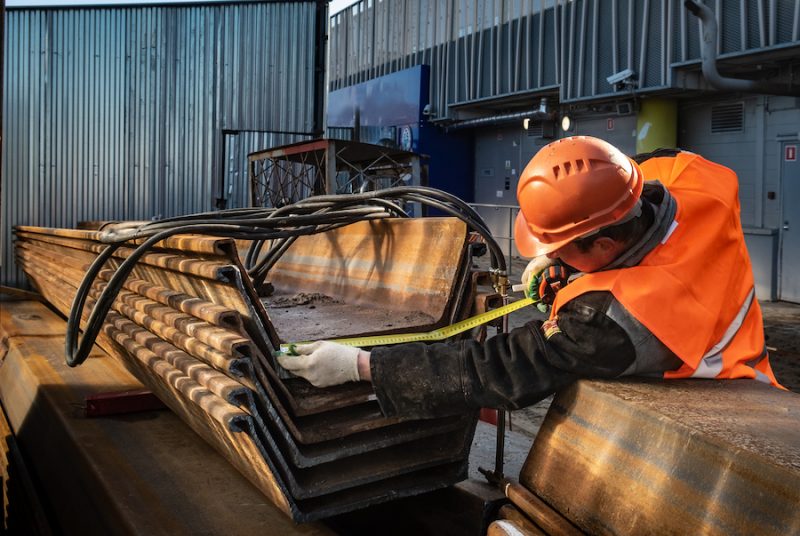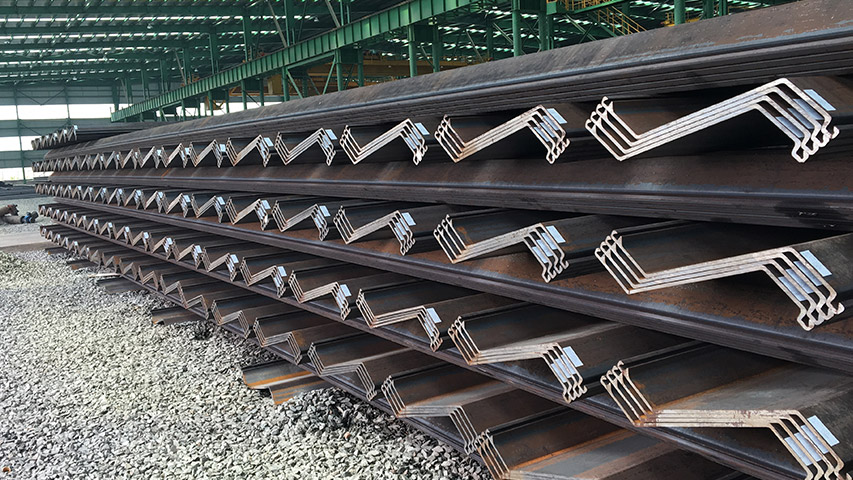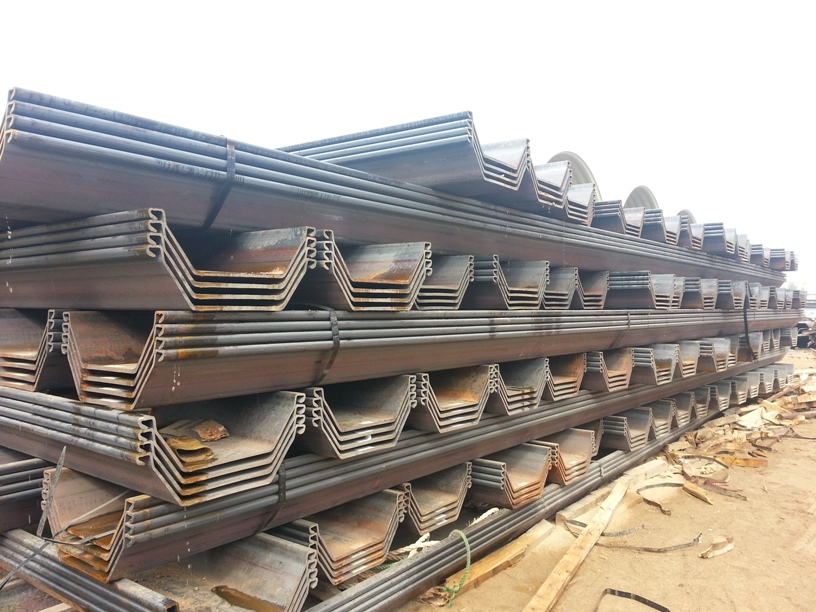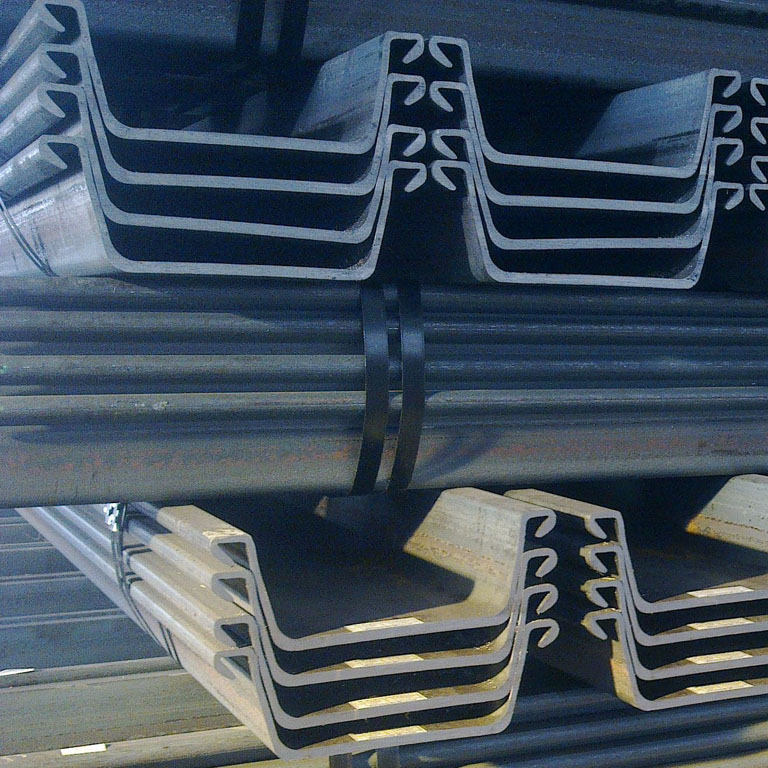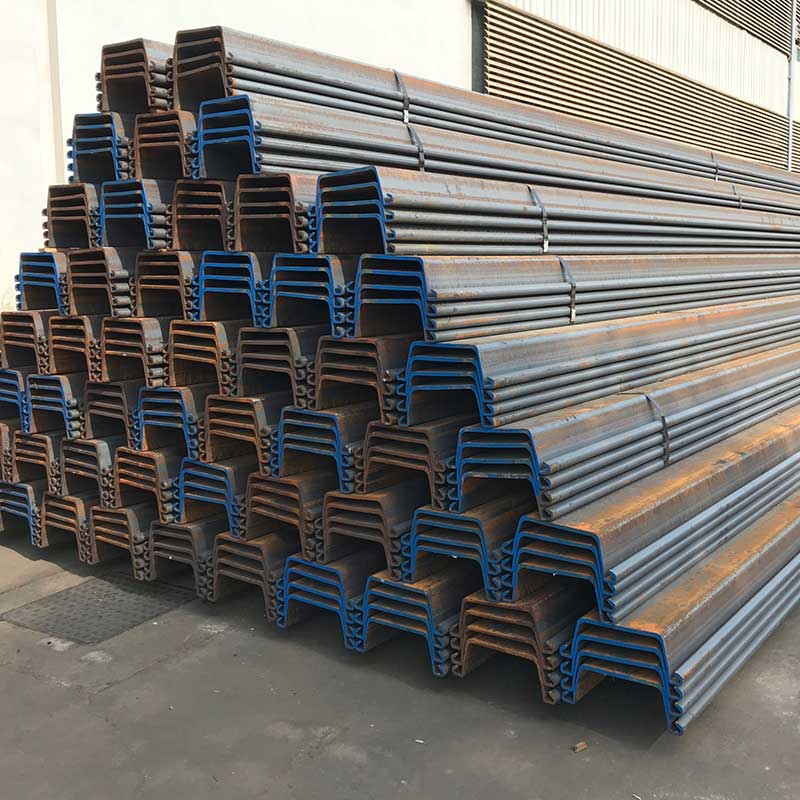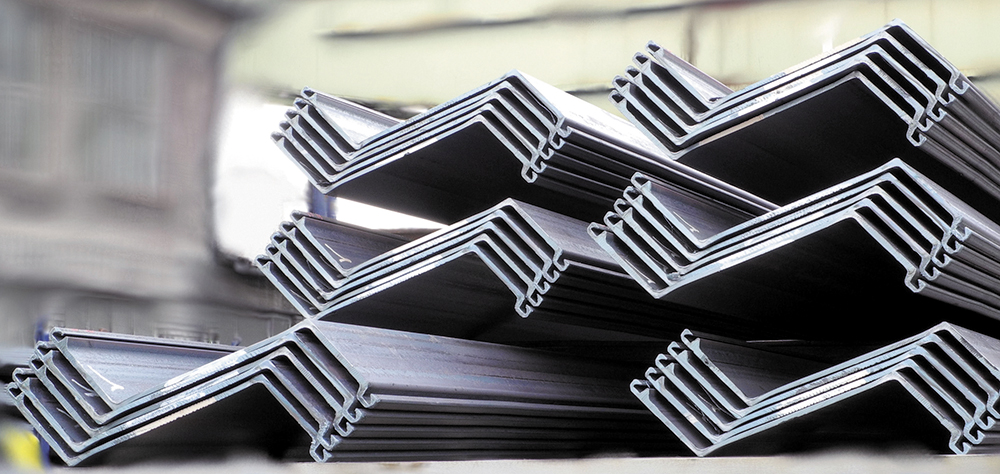U-Shaped Steel Sheet Piles
U-shaped steel sheet piles are designed with a U-shaped profile interlocked on both sides, forming a continuous wall with a centerline in the middle of a double U section wall. This design offers a variety of advantages:
Advantages of U-Shaped Steel Sheet Piles
- Variety of Specifications and Models: U-shaped steel sheet piles come in a wealth of specifications and models, catering to diverse construction needs.
- Great Wave Depth and High Flange Thickness: The combination of a large wave depth and high flange thickness leads to excellent statical properties, adding to the strength and stability of the structure.
- European Standard Design and Production: These steel sheet piles are designed and produced according to European standards. Their symmetrical structure is conducive to repeated use, making them an economical choice for various projects.
- Customizable Length: The length of these piles can be customized according to customer requirements, which brings great convenience to the construction process and reduces cost.
- Convenient Production: These piles can be conveniently produced and customized in advance when used together with composite piles.
- Short Production Design and Cycle: The production design and production cycle for these piles are short, allowing the performance of the steel sheet pile to be determined according to customer requirements.
Applications of U-Shaped Steel Sheet Piles
U-shaped steel sheet piles are versatile and find extensive use in both permanent and temporary structures:
Permanent Structures
- Wharfs and Unloading Yards: These piles can be used to create sturdy and durable walls for wharfs and unloading yards.
- Embankment Revetments, Walls, and Retaining Walls: They can also be used in the construction of embankment revetments, walls, and retaining walls, providing stable support.
- Breakwaters, Diversion Embankments, Docks, and Gates: The piles are suitable for constructing breakwaters, diversion embankments, docks, and gates, providing protection against water erosion.
Temporary Structures
- Sealing Mountains and Temporary Shore Expansion: These piles can be used to seal mountains and for temporary shore expansion, offering temporary support.
- Cut-Off, Bridge Cofferdams, and Large Pipeline Laying: They are also used in creating cut-offs, bridge cofferdams, and for laying large pipelines, providing temporary ditch excavation retaining, water, and sand control.
Flood Control
- Flood Control and Collapse Prevention: These piles can be used for flood control, collapse prevention, and control of sand movement, offering essential protection during flood situations.
In conclusion, U-shaped steel sheet piles are a versatile and efficient solution for a wide range of construction needs. Their variety, customizable nature, and excellent statical properties make them a favored choice in construction projects.

